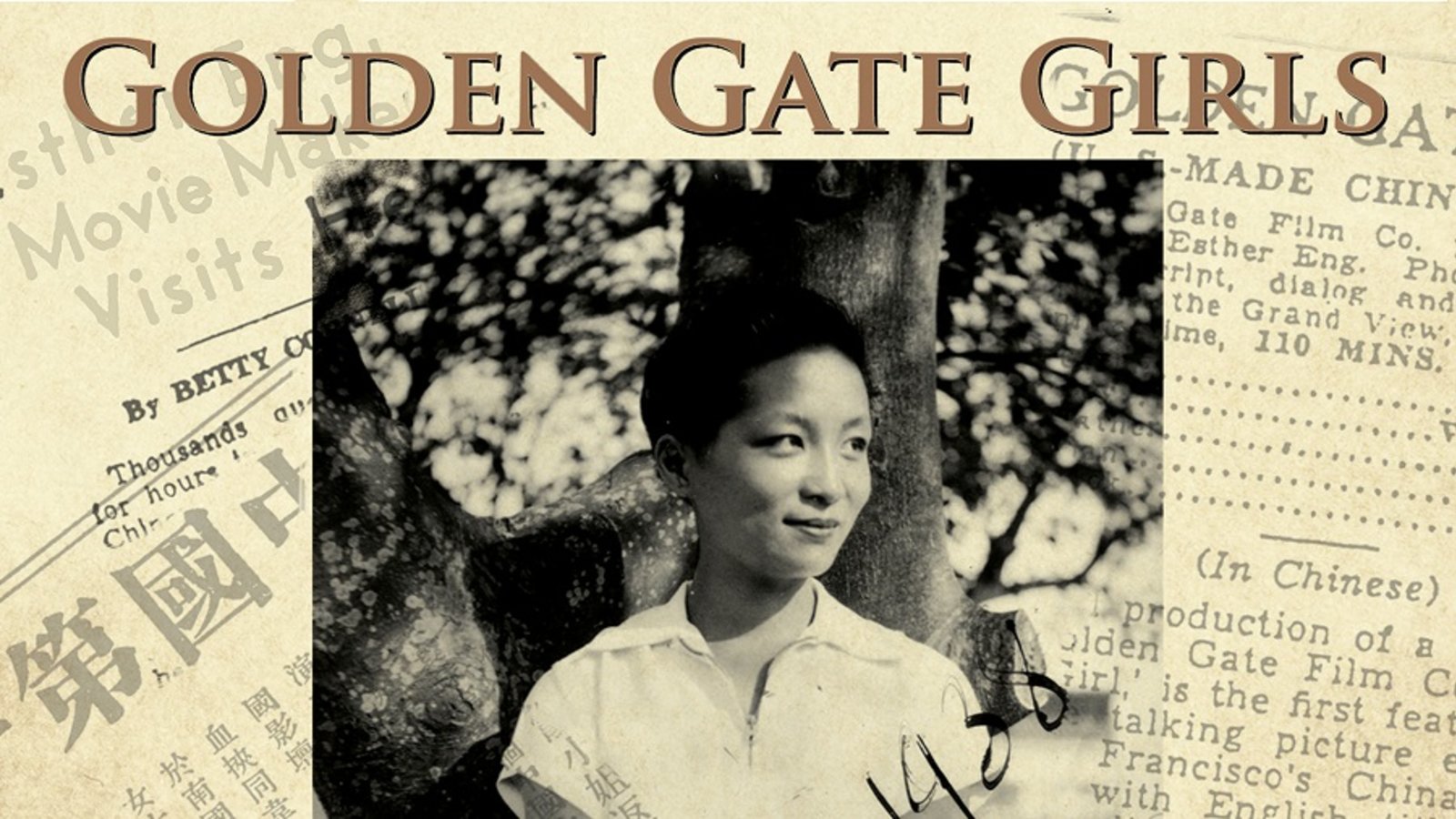Back to Asian Americans on Celluloid Timeline
Golden Gate Girls (2013)
Director and Writer: S. Louisa Wei
Length: 107 minutes
View this film on:

Synopsis
Golden Gate Girls is a biopic about pioneering Chinese American lesbian filmmaker Esther Eng (1914-70). As a youth, the San Francisco native immersed herself in both Chinese opera and film. In 1935, she got the opportunity to co-produce Heartaches, a community-funded film that aimed to aid China’s resistance against Japan’s invasion. Eng went to Hong Kong a year later, officially to promote the film. However, knowing how impossible it was for a woman director of Chinese descent to break into Hollywood, she was also looking for a place to launch her career. Over the next three years, she directed five films, and some featured top stars in Cantonese entertainment. In 1939, the increasing inevitability of war in Hong Kong led Eng to return to San Francisco. Upon her return, she directed Golden Gate Girl, a family drama that introduced a three-month-old Bruce Lee to the movie screen. After World War II, she directed four more films, but her focus turned to restaurants. Partially to help a troupe of Chinese actors who were stranded in the U.S. because of the Chinese Communist Revolution, Eng opened Bo Bo Café in New York’s Chinatown. She went on to open four other Manhattan restaurants, including the upscale Esther Eng restaurant, which attracted many celebrities. She died from cancer at the age of 55.
Significance
In addition to bringing some much-needed attention to a pioneering filmmaker, Golden Gate Girls provides good historical contexts about the plight of women directors (particularly Dorothy Arzner) and Chinese Americans (particularly Anna May Wong) in Hollywood during the first half of the century. The film also reveals that, even during the Chinese Exclusion Era, the Chinese American community was deeply transnational. As Charlotte Brooks’ showed in American Exodus Second-Generation Chinese Americans in China, 1901–1949, racial discrimination and restrictions on professions and homeownership led many—including Esther Eng—to launch their careers in China and Hong Kong during the early 20th century.
The filmmaker
S. Louisa Wei was born in Shandong Province and grew up in Xi’an. After graduate studies in Canada and working briefly in Japan, Wei has been based in Hong Kong, where she is an Associate Professor at the City University of Hong Kong. Many of her documentaries focus on Mainland Chinese subjects, including rock musician Cui Jian, documentary filmmaker Situ Zhaodun, Mao’s 1955 campaign against literary theorist Hu Feng, and executed writer Wang Shiwei. Since 2009, Wei has also explored transnational topics, first with Golden Gate Girls and later with Havana Divas (2018), which focuses on two Cuban women—Caridad Amaran (born 1931) and Georgina Wong (born 1929)—who began learning Cantonese opera in 1930s and toured around Cuba in the 1940s and early 1950s. The making of this film allowed the two to visit and perform in China for the first time. Wei has also written or co-written several books in Chinese (including The Legend of Esther Eng: Cross-Ocean Filmmaking and Women Pioneers) and English (Cinema: East and West).
Back to Asian Americans on Celluloid Timeline
Further reading and listening
Digitized Archival Photos of Esther Eng
Academic Articles
- Law, Kar. “In Search of Esther Eng: Border-crossing Pioneer in Chinese-language Filmmaking.” In Chinese Women’s Cinema: Transnational Contexts. Lingzhen Wang. New York: Columbia University Press, 2011, pp. 313-329.
- Lin, Zhu. “Between Hong Kong and San Francisco: A Transnational Approach to Early Chinese Diasporic Cinema.” Canadian Journal of History, 54(3), pp. 345-371.
Newspaper Articles, Blogs and Popular Books
- Cam, Lisa. “Why Haven’t We Heard of Early LGBTQ+ Icon Esther Eng, Hollywood’s First Chinese Female Filmmaker?” South China Morning Post, Jan. 29, 2020.
- Ferrari, Stef, Deepi Ahluwalia and Jessica Olah. “Esther Eng.” In A Woman’s Place: The Inventors, Rumrunners, Lawbreakers, Scientists, and Single Moms Who Changed the World with Food. Boston: Little, Brown and Company, 2019, pp. 24-27. [This chapter includes a profile of Eng as well as her Chinese Five-Spice Braised Beef Short Ribs. Much of this chapter is available for free on the publisher’s webpage.]
- Hungry Gerald, “Chinatown, My Chinatown” (2015) and “Gone But Not Forgotten Restaurants: Bo-Bo” (2011). Both are available at: http://hungrygerald.com/tag/esther-eng/. [Both of these are about a food blogger’s memories at Esther Eng’s first restaurant.]
- Wei, S. Louisa. “Esther Eng.” Women Film Pioneers Project, 2014.
Podcasts
- I Don’t Know Her Podcast, “Race Car Driver & Filmmaker: Shirley Muldowney & Esther Eng”
- Notorious: A Comedy Vintage Podcast, “Sayyid Salme And Esther Eng!”
- Vintage Lesbians, “Esther Eng.”
